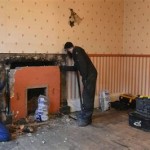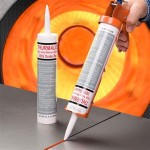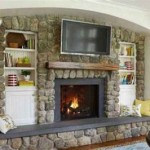Rock Over Brick Fireplace: A Comprehensive Guide to Design and Implementation
The aesthetic appeal of a fireplace often contributes significantly to the ambiance and value of a home. While traditional brick fireplaces offer a classic look, homeowners may desire a more rustic or modern aesthetic. Covering a brick fireplace with rock presents a transformative solution, allowing for a significant design update without requiring complete demolition. This process, however, demands careful planning, material selection, and execution to ensure both structural integrity and visual appeal.
This article delves into the intricacies of covering a brick fireplace with rock, exploring essential considerations from preparation and material choices to installation techniques and finishing touches. The objective is to provide a clear understanding of the process, enabling informed decision-making for homeowners contemplating this remodeling project.
Assessing the Existing Brick Fireplace
Before embarking on the project, a thorough assessment of the existing brick fireplace is paramount. This evaluation addresses structural soundness, surface preparation requirements, and potential challenges that may arise during the rock installation. Ignoring pre-existing issues can compromise the longevity and appearance of the finished fireplace. The assessment should include the following key areas:
Structural Integrity: Inspect the brick for cracks, crumbling mortar, or any signs of instability. Significant structural damage necessitates repair before proceeding. Minor cracks can often be addressed with patching compounds, but extensive damage may require professional intervention. The chimney's condition must also be verified, as it directly impacts the fireplace's functionality and safety. A damaged chimney can lead to smoke backdrafts or, in severe cases, fire hazards.
Surface Preparation: The brick surface must be clean and properly prepared to ensure adequate adhesion of the mortar. Remove any loose brick, dirt, soot, or existing paint. A wire brush is effective for removing loose debris. In cases of heavy soot buildup, a specialized cleaner designed for masonry may be required. Pressure washing can also be used, but caution is advised to avoid damaging the brick or forcing water into the structure. After cleaning, the surface needs to be roughened to create a better bond. This can be achieved with chiseling or applying a bonding agent.
Code Compliance: Local building codes often dictate specific requirements for fireplace construction and modification. Research and adhere to these regulations concerning clearances from combustible materials, hearth extensions, and chimney specifics. Failing to comply with local codes can result in fines or the need for costly rework.
Weight Considerations: Adding rock veneer increases the weight load on the existing fireplace structure. It is essential to ensure that the foundation can support the additional weight. If there are concerns about the foundation's capacity, consulting with a structural engineer is advisable. Lightweight manufactured stone options can also be explored to minimize the added weight.
Selecting the Appropriate Rock Veneer
The choice of rock veneer significantly influences the aesthetic appeal and overall cost of the project. Natural stone offers a unique, organic look, while manufactured stone provides a more consistent appearance and often comes at a lower price point. Considerations include the type of rock, size, shape, color, and texture.
Natural Stone: Natural stone options include river rock, fieldstone, ledge stone, and flagstone. Each type offers a distinct aesthetic. River rock presents a rounded, smooth appearance, while fieldstone offers a more rugged, irregular look. Ledge stone provides a stacked, linear appearance, and flagstone is characterized by large, flat pieces. Natural stone is typically more expensive than manufactured stone and requires more skill to install due to its varying shapes and sizes. The weight of natural stone can also be a factor, potentially necessitating additional structural support.
Manufactured Stone: Manufactured stone, also known as cultured stone, is a concrete-based product designed to mimic the look of natural stone. It is typically lighter, less expensive, and easier to install than natural stone. Manufactured stone is available in a wide range of styles, colors, and textures, offering greater design flexibility. However, some homeowners may prefer the authenticity and natural variations of real stone. When selecting manufactured stone, it is crucial to choose a high-quality product that is durable and weather-resistant.
Thin Veneer: Regardless of whether natural or manufactured, thin veneer represents a popular choice. Thin veneer stone is cut or manufactured to a uniform thickness, typically less than 1.5 inches. This reduces the weight load on the fireplace structure and simplifies installation. Thin veneer stone can be applied directly to the prepared brick surface using mortar or a thin-set adhesive.
Color and Texture: The color and texture of the rock should complement the overall design of the room. Consider the existing color palette and architectural style when making this selection. A lighter-colored stone can brighten a dark room, while a darker stone can create a more dramatic effect. The texture of the stone can also impact the overall look and feel of the fireplace. A rough, textured stone can add a rustic touch, while a smooth, refined stone can create a more contemporary look.
Installation Techniques and Best Practices
Proper installation is crucial for the success of the rock over brick fireplace project. This involves careful preparation of the mortar, precise placement of the stones, and attention to detail to ensure a professional finish. Safety precautions should always be observed when working with power tools and mortar.
Mortar Preparation: Use a high-quality mortar specifically designed for stone veneer application. Follow the manufacturer's instructions carefully when mixing the mortar. The consistency of the mortar is critical; it should be thick enough to hold the stones in place but also pliable enough to work with. A dry mortar mix can lead to poor adhesion, while an overly wet mix can cause the stones to slip. Consider using a pre-mixed mortar for added convenience and consistency.
Stone Placement: Begin by laying out the stones on the floor to plan the pattern and ensure a balanced distribution of sizes and colors. Start the installation at the bottom and work upwards, applying mortar to the back of each stone and pressing it firmly against the prepared brick surface. Use a level to ensure that the stones are aligned properly. Maintain consistent spacing between the stones to create a uniform grout line. Stagger the joints for a more visually appealing and structurally sound installation.
Cutting and Shaping: Cutting stones to fit around the firebox opening or other architectural features may be necessary. Use a wet saw with a diamond blade for precise cuts. Safety glasses and hearing protection should be worn when using a wet saw. For irregular shapes, a hammer and chisel can be used to carefully shape the stones. File or grind down any sharp edges for a smoother finish.
Grouting and Finishing: After the mortar has cured for the recommended time, apply grout between the stones. Use a grout bag or float to fill the joints completely. Wipe off any excess grout from the surface of the stones with a damp sponge. Allow the grout to cure according to the manufacturer's instructions. After the grout has cured, seal the stone and grout to protect against staining and water damage. Apply a sealant specifically designed for stone and masonry.
Fireplace Mantel Integration: The rock installation should seamlessly integrate with any existing or planned fireplace mantel. Ensure that the mantel is properly supported and securely attached to the wall or fireplace structure. Consider the style and material of the mantel when selecting the rock to create a cohesive design. The mantel can be installed before or after the rock veneer, depending on the specific design and installation method.
Clean Up: Thorough cleanup is an essential final step. Remove all excess mortar, grout, and debris from the work area. Dispose of materials properly. Clean the surface of the stone fireplace with a mild detergent and water. This will remove any remaining dust or residue and reveal the true beauty of the finished project.
By carefully considering these aspects, homeowners can successfully transform their brick fireplace with rock, creating a visually stunning and structurally sound focal point for their living space. The end result is a unique fireplace with a timeless design.

Stone Veneer Over A Brick Fireplace Updates The Look

Stone Veneer Over A Brick Fireplace Updates The Look

Stone Veneer Over A Brick Fireplace Updates The Look

Manufactured Stone Veneer That I Installed In Dry Stack Over A Drab Brick Fireplace

65 Best Stone Fireplace Design Ideas To Ignite Your Decor Wood Mantel Mantels Designs

How To Cover A Brick Fireplace With Stone

Fireplace Facelift Using Natural Stone Veneer

How To Hang Art On A Stone Or Brick Fireplace As Hanging

Fireplace Makeover Featuring Ledgestone The Cultured Stoners

Read This Before Your Stone Fireplace Makeover Understanding Undertones
Related Posts








